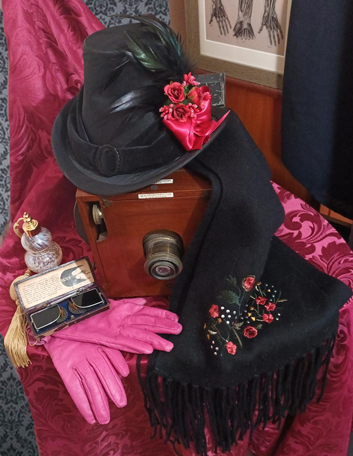
They say the things we wear say much about us as individuals. This can be equally true for the characters in our favourite book, film, or television series. It’s certainly true for the characters of my Bow Street Society novels and short stories. Yet, despite their clothes saying much about them, I’ve never discussed the reasons behind the fashion I often describe. Therefore, in this month’s blog, we dip our toes into the world of the Bow Street Society once more to explore why its members dress the way they do.
A hat can speak a thousand words
During the late nineteenth century, and beyond, your choice of headwear would say far more about you than your clothes. On a basic level, it would represent your trade or profession. For example, workmen and labourers tended to wear caps, whilst clerks tended to opt for bowler hats. This, in turn, would represent the social class you belonged to. Caps usually denoted the working class, bowler hats the middle class, and top hats the upper class. The overall condition and quality of your headwear would further hint at the health of your finances. For example, a gentleman of the upper classes could own a top hat, but a scuffed and worn top hat might suggest he’d fallen on hard times. Finally, what you did with your hat upon entering a home would betray how “polite” and “well-mannered” you were. This is because the home’s occupants would usually expect their visitors to remove their hats and either leave them at the door or set them aside. This rule applied to both men and women.
Amongst the Bow Street Society’s members, architect Mr Bertram Heath opts for a bowler hat, whilst gentleman and illusionist Mr Percival Locke chooses a top hat. In contrast, the lawyer, Mr Gregory Elliott, can often be seen wearing a pillbox hat. This choice of headwear is very much in keeping with his middle class status. With regards to the ladies, Lady Owston’s secretary, Miss Agnes Webster, wears her hat at an angle upon her head and never removes it whilst indoors. During the late 1890s, it was fashionable for ladies to wear their hats squarely on their hands. Miss Webster’s decision to go against both fashion and perceived propriety is based upon her wish to hide the scars which have prevented her hair from growing on a patch of her scalp.
Frock coats and corsets
By the late 1890s, fashion had begun to shift. For gentlemen, the wearing of a frock coat could single you out as being quite conservative. Consequently, it was increasingly the common choice of older gentlemen. In contrast, younger gentlemen, particularly those who wanted to be perceived as fashionable, opted for single or double-breasted jackets on their suits. For ladies, corsets were the fashionable choice. These were used to make the waist as small as possible, and were often paired with short jackets and blouses, or “waists.” Yet, some women chose not to wear a corset in order to make a political statement. These women usually belonged to the artisan classes and were perceived as unconventional, if not radical.
Amongst the Bow Street Society’s members, Mr Elliott wears a frock coat, but not because he’s conservative. Instead, he wears it to portray an illusion of conservatism to his clients. Mr Locke wears a frock coat for similar reasons. Yet, he isn’t trying to impress clients but instead tries to hide his vices beneath a conservative façade, namely his heroin addiction and womanising. His choice of brightly coloured frock coats hints at the fact he is more fashion conscious than some might give him credit for. In contrast to both Mr Elliott and Mr Locke, Mr Heath chooses to wear double-breasted suits.
Perhaps the most memorable coat is that worn by Detective Inspector Caleb Woolfe of the Metropolitan Police. Rather than a frock coat or suit jacket, he wears a thick fur coat that’s not been cleaned in many years. Consequently, a foul odour surrounds him wherever he goes and lingers where he’s been. Although standards of personal hygiene in the late 1890s weren’t as high as they are now, Woolfe’s personal hygiene is noticeably sub-par even for the late 1890s. Yet, this is intentional on his part, in that he uses the bad odour as a barrier to others to ensure neither they nor he get hurt. In other words, his foul-smelling fur coat is his coat of armour against the world.
The Bow Street Society’s clerk, Miss Rebecca Trent, wears a corset more often than not. A keen follower of fashion, she likes to reflect the latest trends in her choice of attire. Yet, when it comes to corsets, she wears them simply because they make her feel slim and this, in turn, makes her feel good about herself. In contrast, Miss Webster chooses not to wear a corset in order to make the political statement outlined above.
Readers of the Bow Street Society novels and short stories will tell you I often describe what a character is wearing when they’re first introduced. It’s an aspect many of my readers enjoy, but not all understand. I hope this blog has gone a little way to explain the reasons behind the descriptions, and further increases the enjoyment of those who’ve always appreciated them.
~ T.G. Campbell, May 2025.

Leave a Reply